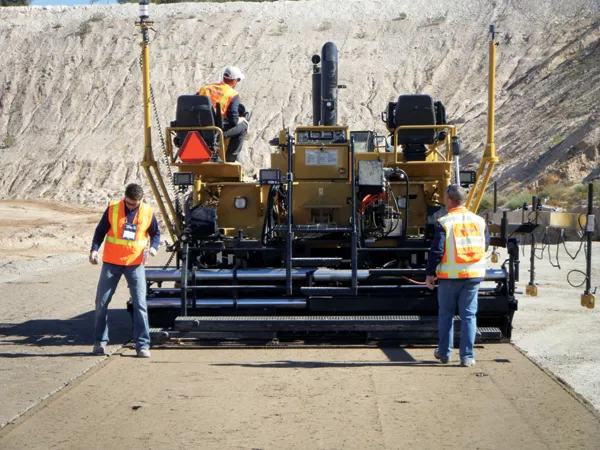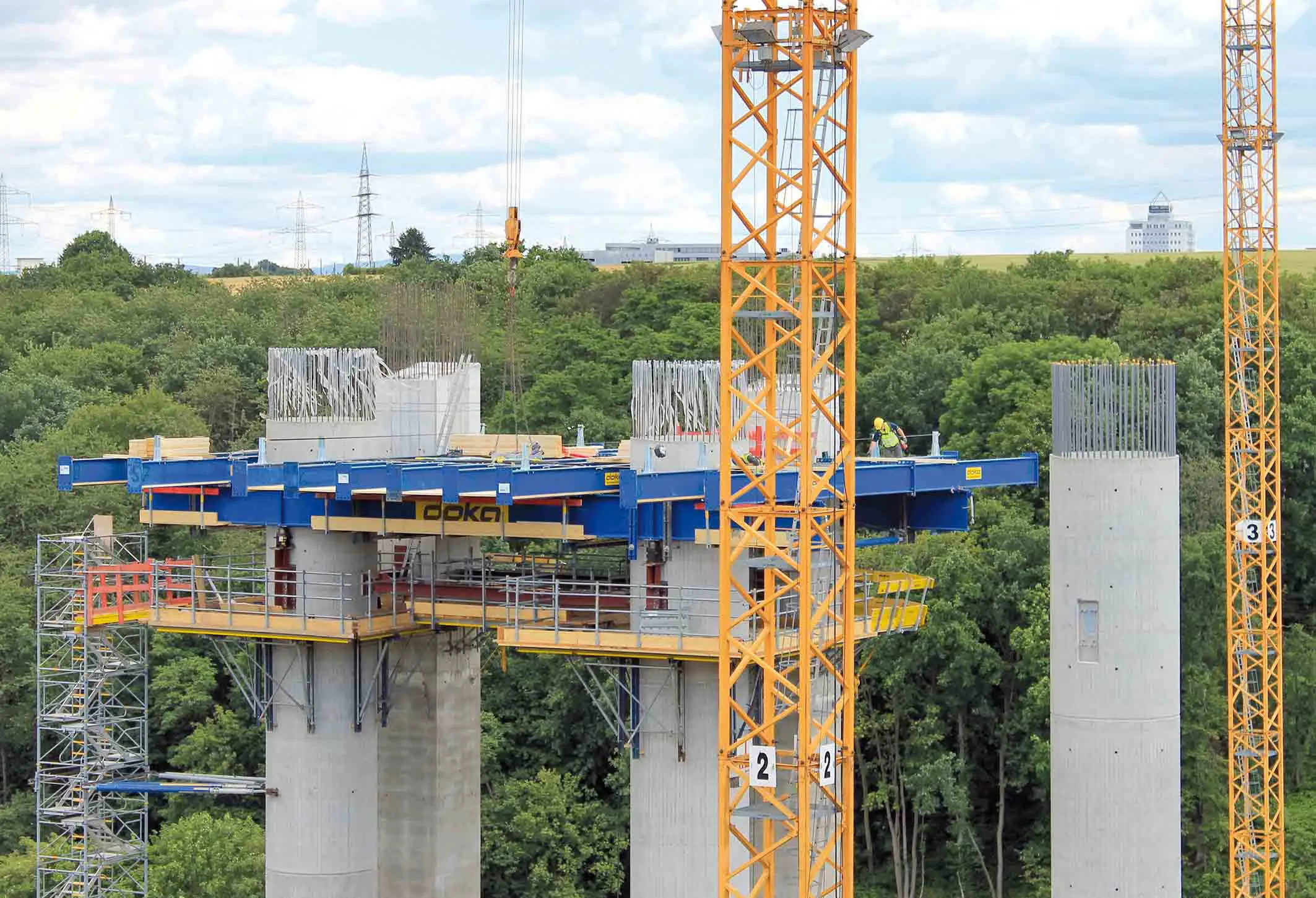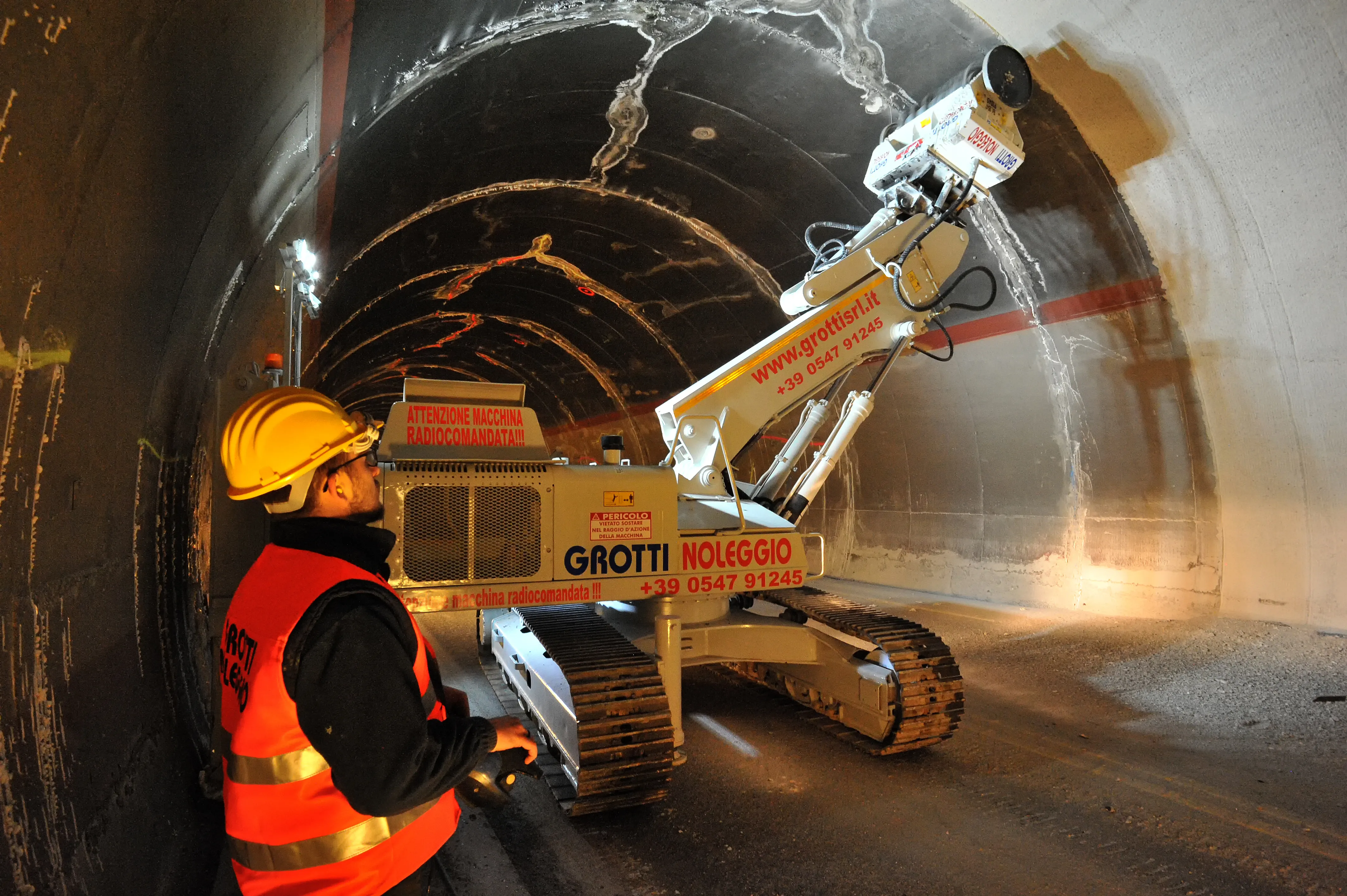November 4, 2015
Demolition work has been carried out on a bridge crossing the busy A90 route in Scotland, just to the north of the capital, Edinburgh. The bridge carried the B900 over the A90 but had to be removed as its narrow design prevented the route from being upgraded to full motorway status. The first stage of the demolition work was carried out on October 24th and 25th, with the second stage on October 31st and November 1st and final remedial work to be carried out on November 14th and 15th. The first stage of the demolition required the temporary closure of the A90 in a weekend possession, with any traffic being switched temporarily to the Kincardine Bridge some distance upstream. Geotextiles and wood panels were laid on the surface of the A90 to protect the asphalt from damage as the work was carried out. A number of excavators equipped with hydraulic breakers were used to tear down the old bridge structure, with the concrete rubble and steel reinforcement then being loaded into trucks and hauled away for recycling. The second stage of the bridge demolition involved similar measures to protect the roadway, as will the third.
Traffic on the B900 at South Queensferry had already been switched over to a new, wider bridge. The work is part of a series of upgrades to roads in the area being carried out along with the construction of the new Queensferry Crossing. This spans the Forth Estuary and will carry the major portion of traffic currently using the Forth Road Bridge, which opened in 1964.
A full report on the Queensferry Crossing will be included in the November/December 2015 issue of World Highways.
Traffic on the B900 at South Queensferry had already been switched over to a new, wider bridge. The work is part of a series of upgrades to roads in the area being carried out along with the construction of the new Queensferry Crossing. This spans the Forth Estuary and will carry the major portion of traffic currently using the Forth Road Bridge, which opened in 1964.
A full report on the Queensferry Crossing will be included in the November/December 2015 issue of World Highways.









